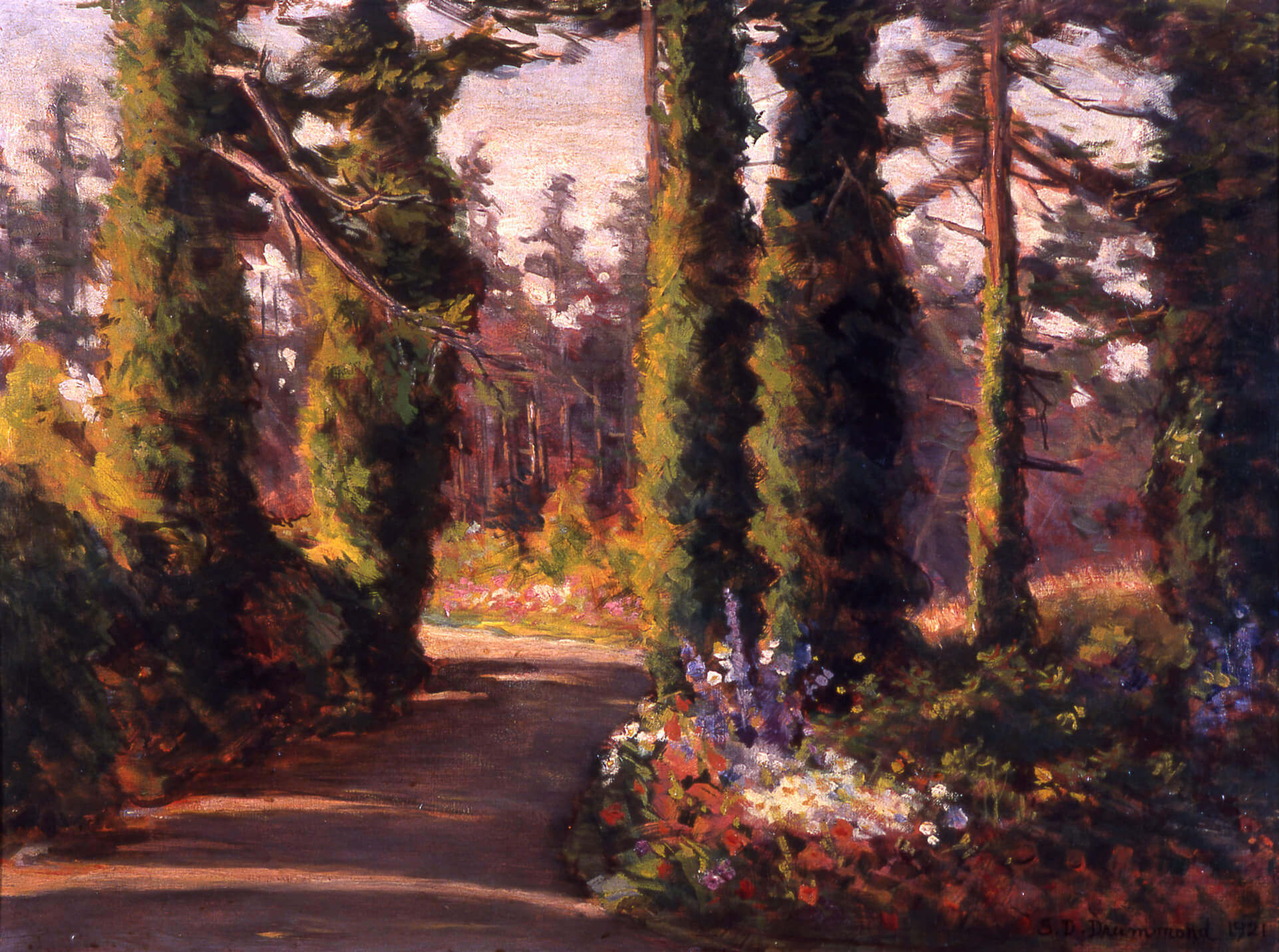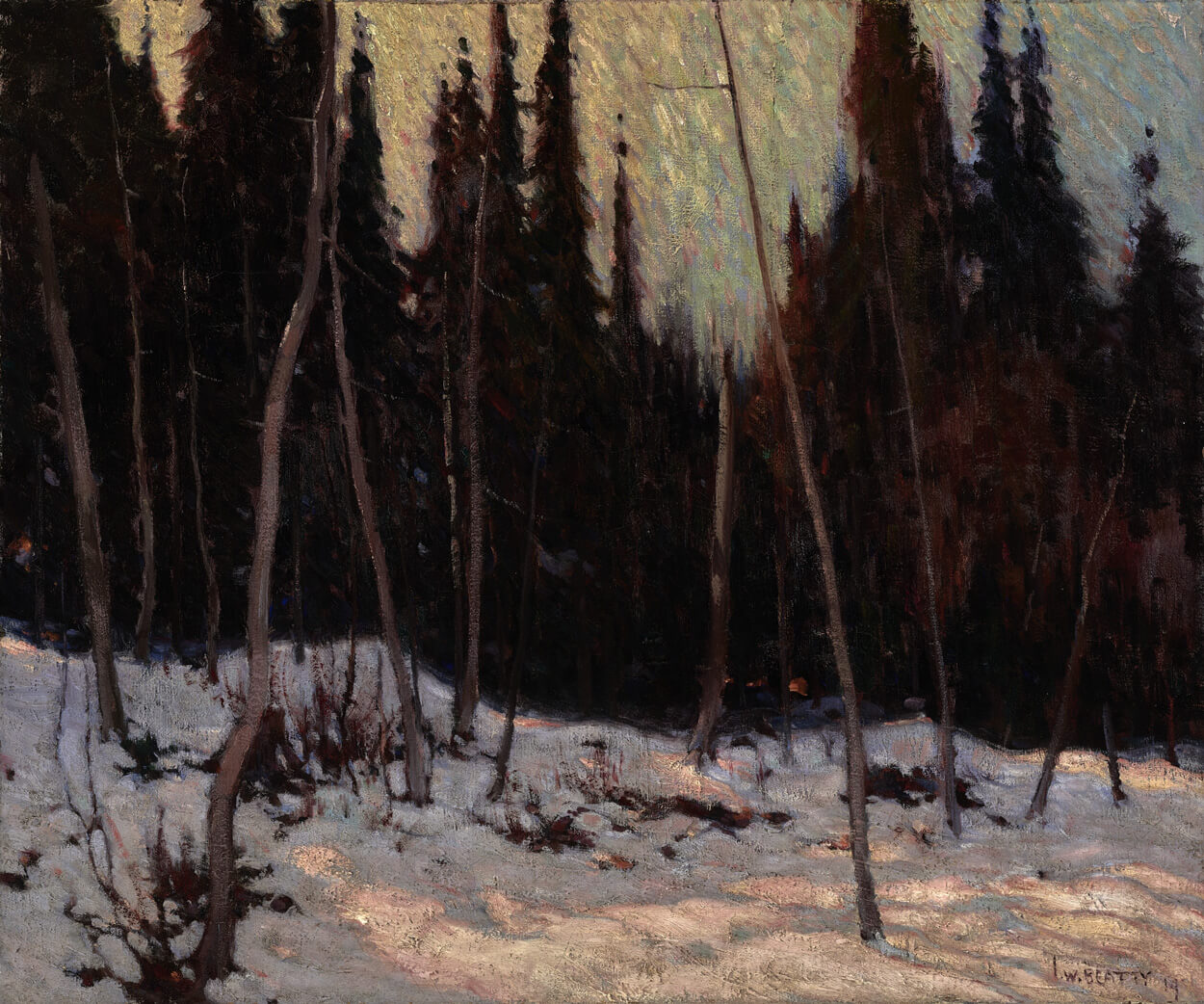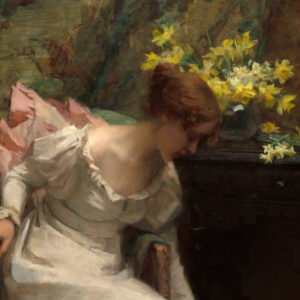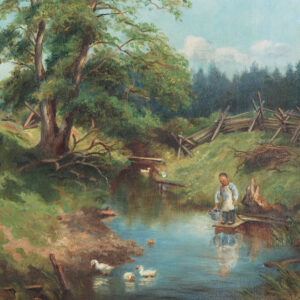Driveway of Moulton Combe, Oak Bay 1921

Sophie Pemberton, Driveway of Moulton Combe, Oak Bay, 1921
Oil on canvas, 45.7 x 61.7 cm
Art Gallery of Greater Victoria
Dappled shade spreads over a winding, unpaved driveway leading to Moulton Combe, the house and property of Pemberton’s sister Susie and her husband, William Curtis Sampson. It is not a static scene: the bend in the driveway provokes the question—What is around that corner? There is movement too in the branch sweeping diagonally from the ivy-encumbered fir tree on the left. The distant trees, silhouetted against a warmly lit morning sky, are purposefully indistinct.
Despite the hiatus in Pemberton’s art practice after the accident in 1916, Driveway of Moulton Combe, Oak Bay is a confident painting. Other known paintings during the 1920s include the exotic The Parrot Court, Madurai Temple, India, 1923; a formal portrait of Horace Deane-Drummond, 1925; a landscape La Napoule Bay, 1926; and several commissioned portraits whose present whereabouts are unknown.

Here, Pemberton has presented a canvas of sophisticated thought, a modern interpretation of what she saw before her. The bucolic scene is also illustrative of the changes wrought to the original wild landscape through residential development in Oak Bay, on the subdivided lands of Gonzales—the original Pemberton estate. Arriving in her hometown in 1921 with her second husband, Horace Deane-Drummond, after an absence of over a decade and her recent travels in India and Ceylon, Pemberton would have seen many changes in places she remembered. Uneasy with this development, she avoids painting it and instead conveys nostalgia—an English perennial garden bed amid the Douglas fir.
Some of the same qualities—the challenge of capturing dappled light on landscape, coniferous trees, and a changeable sky—are found in Morning, Algonquin Park, 1914, by John William Beatty (1869–1941). He also attended the Académie Julian, overlapping in time with Pemberton. And like her, he absorbed the newer influences in art, moving from academic realism toward interpretation of the landscapes he saw around him. Though never in the forefront of Canadian modernists, he progressed steadily with his own way of seeing. This composition was very much an exercise: the scenery was mediocre, with no one feature to arrest the gaze, but presented myriad challenges in its interpretation.

 About the Author
About the Author
 More Online Art Books
More Online Art Books
 Acknowledgements
Acknowledgements